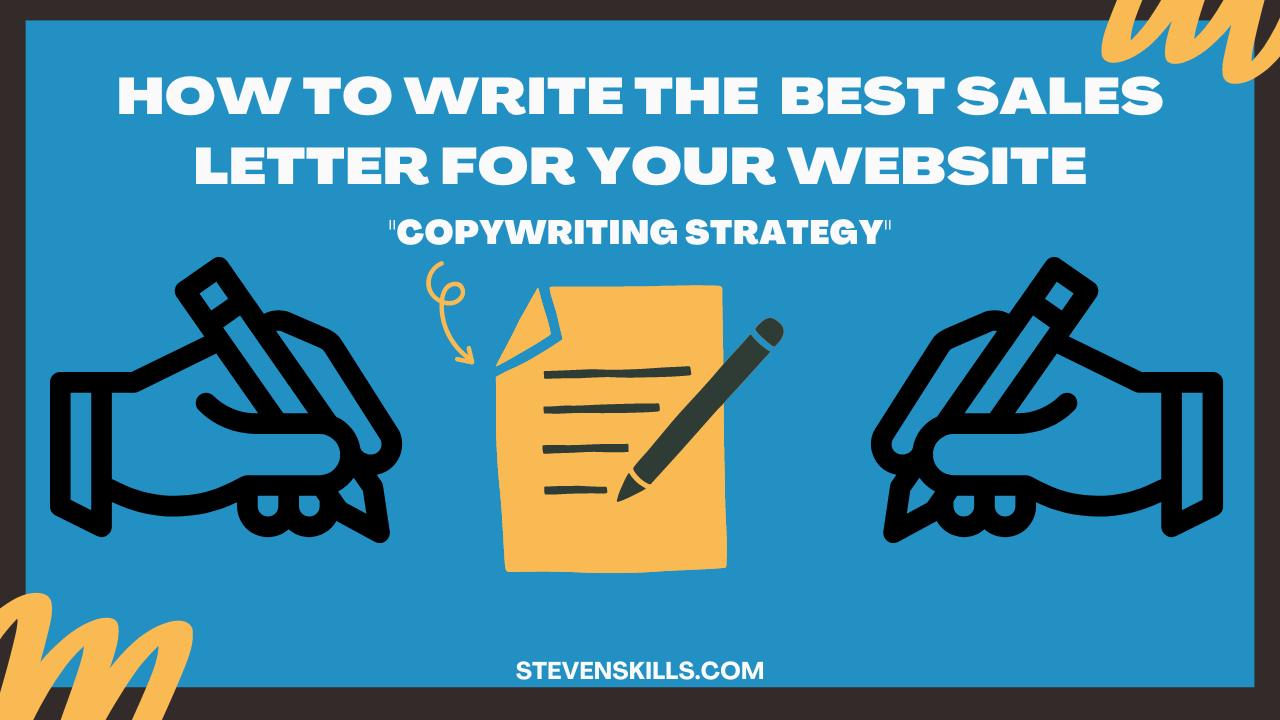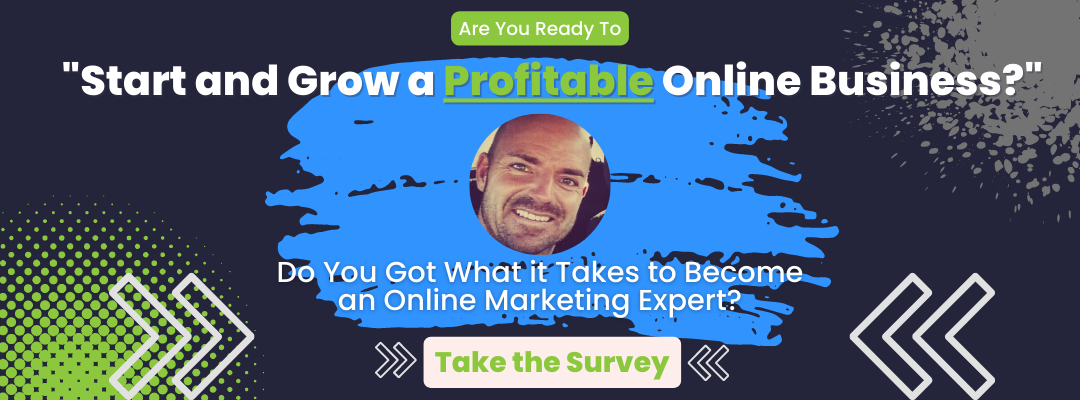Sales Letter Copywriting Strategies

How to Write the Best Sales Letter
If you're a freelance writer, a sales letter is probably one of your bread-and-butter writing projects. If you're not, it's still likely that you'll get asked to write a sale letter from time to time . Or, you simply need to write one for your own product or service. Whether you work for yourself or someone else, these tips will help you write better and more effective sales letters than ever before:
Outline your sales letter — but not too much
Outlining your sales letter is one of the most important — and often overlooked — steps in writing it. When you outline, you are creating a blueprint for your sales letter to achieve excellent results. This article will help you stay on track so that every section flows smoothly into the next one, and so that every sentence helps move the reader closer to making a purchase.
The key is to outline just enough.
Outlining too much can be paralyzing for new copywriters who are afraid of missing something important by not hitting every single word count requirement from this section to that section (the dreaded “blah blah blah” effect). So instead of outlining, they simply write down everything they think might be relevant in one big go-around. The result? A lengthy block of text riddled with tangents and endless lists — not exactly what we're going for here!
Compose an Amazing Headline
We've established that the best sales letters are those that deliver excellent results. That's why it's so important to nail your headline—if you don't get this right, no one will read the rest of your letter and you'll miss out on a huge opportunity.
When crafting a headline, keep these tips in mind:
Keep it short and catchy
Make sure it reflects what's in the body of your letter
It should be the first thing a reader sees when they open up your email or visit your website
Make an offer that's impossible to refuse
Once you've hooked the reader, it's time to reel him or her in. To do this, your landing page has to make an offer that's impossible for them to refuse.
To create a compelling sales letter, you must identify your unique selling proposition. This statement should highlight why your customers should choose your business over others. It should also describe the value your customers get from doing business with you.
It is important to research your competitors and understand how they position their services and products. Once you've done this, you will have an idea of how to make your message more persuasive and memorable.
A successful USP focuses on the customer's needs and wants. For example, HelloFresh focuses on the fact that it is the best-selling product in its category. It also reinforces its unique features, which make it a better choice for consumers. It also wants customers to continue on this path, rather than leave it. Here's a sample of a unique selling proposition. You can use a similar structure to introduce your content in a sales letter.
Here are some ideas for making a strong offer:
Offer a great deal. You can't go wrong with a good old-fashioned sale or giveaway. This can be as simple as offering discounts on products or services, or you could offer multiple items at once in your first order (e.g., buy one get one free).
Offer a free trial period with no obligation of purchase if they're not satisfied after trying out your product/service for a while first! This is an easy way of getting potential customers into your marketing funnel without risking anything on their end—they're essentially taking no financial risk in testing out what you're selling before making any decisions about whether or not they want it long-term! Plus if they love what you've got going on here then chances are high that they'll want more down the road anyway so why not give them some extra incentive now? That way even if they don't purchase today there's still hope left over maybe next week instead."
Personalize it
One of the best ways to make your copy pop is by personalizing it. You can do this by:
Using the person's name in the headline, body of the letter and P.S. line
Making the offer specific to their needs, using their demographic and behavioral data as a guide.
But what if you don't have access to that information? Don't worry! Here are some tips for writing with personality even if you're not able to use first names or other personalized information:
Touch on triggers and emotions above all else
The human brain is designed to react to emotions in a way that makes us more likely to buy. This is why you see so many ads trying to appeal to your emotions and make you feel an intense feeling, like “I need this!” or “My life will be better if I use this!” You can use this knowledge when writing your sales letter.
When you write your sales letter, focus on emotions above all else. For example, instead of listing facts about your product or service (like the size, weight, color etc.), list the emotions it will bring up in people (like how happy they'll be, excited, feel good, etc).
Organize your letter to maximize reader flow
The best sales letters have a structure that makes it easy to follow. When you create your letter, use the following tips to make sure your readers are engaged from start to finish:
Use subheadings to break up text and make key points stand out.
Use short paragraphs within each section so that readers can easily grasp the information in each section without getting lost or overwhelmed.
Highlight important points with bulleted lists for maximum impact, and then use numbered lists for longer items (such as a list of features). This way, you're both visually breaking up text while making it easy for people to scan quickly through what matters most!
If there's anything important that might get overlooked, like an offer deadline or product availability date—put it at the end of your letter after everything else has been read so they don't miss it! You could even include links or other details on another page if there's space available on the bottom half of your document...just make sure they're visible enough though so no one misses them either when they first open up their email inboxes!
Focus on benefits, not features
As you're writing your sales letter, focus on the benefits of your product or service.
Use active voice to communicate your message clearly and concisely. This means avoiding passive language like "It was found that..." Instead, use an action verb such as "we discovered."
Use positive language that emphasizes the good points of your product or service rather than its negative aspects (like price). For example: "This software makes it easy for you to do X." vs., “This software is easy for you to use even if it costs a lot” or “You can save time with this tool because…”
Use "you" frequently in your copy instead of using impersonal pronouns like “it” or “they.”
Here's one more tip: memorize these two words: because and now! Why? Because these two words are excellent ways to emphasize key points of interest (and avoid sounding repetitive).
When writing about why someone should buy from us today instead of tomorrow (or next week), start each sentence with one of those two words followed by another word that explains why we need them sooner rather than later before continuing onto our main point underlined above.
Keep it short and sweet
While you want to make sure your sales letter is as short and sweet as possible, it's important to keep it short enough that people will read it. That is, if you're sending an email campaign and your sales letter takes up the entire email, then people might not even read past the first paragraph. On the other hand, if you're submitting a web form and asking for a lot of information from visitors before they can get to your offer--they probably won't stick around long enough to finish reading your offer either.
Keep in mind that when people start reading something online without an immediate "benefit" (e.g., buying something), they tend only skim or scan over what's there because they don't see the value yet (and may never).
Your goal here isn't just about getting them excited about what's inside—it's also about getting them excited enough that they'll be willing spend more time with what you have written than they would otherwise have spent if they hadn't been lured in by this hook at all!
Create an Actionable Call-to-Action
A call-to-action is the final statement in your sales letter that tells the reader what to do next. It should be clear, concise, and easy to understand. You need to make it very clear what they will gain by doing so. (For example, “get my top tips on how to increase your productivity”), as well as making it equally clear what they might lose out on if they don't take action. (For example, “and you'll miss out on these free bonuses”).
It's also important that your call-to-action is straightforward, with no hidden steps or hoops for people to jump through before gaining access to whatever it is that you're offering them. If there are multiple ways in which someone can sign up for something and join your mailing list (e.g., signing up via Facebook or Twitter), then make sure that each option has been clearly highlighted within the body of your sales letter so no one feels left behind!
Here a few tips for a strong call-to-action:
Add a sense of urgency. You might use a "time-sensitive" call to action in a sales letter. For example, a company may want to ask visitors to sign up for their newsletters by offering a free dog bed. A similar tactic might be to offer a discount on a first purchase. In this case, the brand asks the visitor to enter his or her email address in exchange for a coupon for a future purchase.
Be certain that the prospect will be willing to commit to the call. If they don't commit to making a purchase right away, they won't read your entire sales letter. Remember that they're reading it to another person, sitting at their desks. They have a family photo on their desk or a stress ball on the kitchen counter. The goal is to grab their attention quickly and convince them that they need your product or service.
Incorporate calls to action into your copy. This is the way to move your prospects through the sales funnel and convert them into customers. The best way to implement a call to action is to create a clear path for your customers to follow. You can do this by adding a strong CTA at the beginning of your copy. There are plenty of different ways to include a call to action in your sales letter.
Include a clear call to action at the end of your sales letter. A call to action is a simple, concise sentence that will inspire your reader to take action. You can use a simple phrase, such as "buy now" or "download now," and use this to inspire your readers to take action. Once your visitor has made the choice to move forward, your sales letter should be successful. And it's not enough to just tell them that you want them to buy your product. Make sure your CTA is paired with the offer or service that you are offering.
Use a P.S. line to market other products or services you sell...and remind them of your offer!
Use a P.S. line to market other products or services you sell…and remind them of your offer!
Try this: “To learn more about how to attract more customers, check out [Your Product Name] at www.example.com/productname."
This is an easy way to get more sales from your existing customer base by reminding them of the offer and encouraging them to buy (or sign up for) another product or service that they need or want.
If you follow these steps, your sales letters will be great!
Have a great offer. There is no point in creating a sales letter if all it does is tell people about your company and what you do. You need to have an offer that makes them take action, which is why we recommend having multiple offers with different price points and incentives.
Write a KILLER Headline that entices the reader emotionally to read your sales letter further.
Personalize it. The more relevant your message is to the reader, the better chance they will respond to it. This can be done by including their name or referencing something specific to their location or business type.
Use triggers and emotions. When writing sales letters, remember that people don't buy things because they're logical; they buy them because they feel emotions when presented with certain things like value propositions or calls-to-action (CTAs).
Provide a STRONG call-to-action that's clear and concise as to what the reader must do next.
Conclusion
The sales letter is an effective tool for any business. It can be used to sell your products, services or even yourself as a brand. With the right strategy and content, you can turn your website visitors into customers and increase revenue at the same time.
P.S. Did you know that there is software online right now that can help you write your entire sales letter for you?
That's right! They can even write your email campaigns, social media posts, blog articles - just about anything you need ad copy or copywriting for.
Here are a few suggestions: (and no, these are not affiliate links)
P.P.S. Here's an article to help you write better blog posts.



